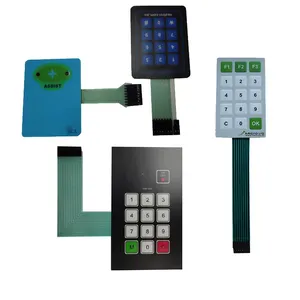Introduction to Computer Keyboard Operating
The computer keyboard operating system is the foundation of our interaction with computers and is truly an integral component of modern computing. As the primary input device, a computer keyboard transforms keystrokes into actions, allowing users to navigate software, execute commands, and communicate digitally. Effective computer keyboard operation is essential for productivity, whether you're a professional typist, a programmer, or an avid gamer.
Types of Computer Keyboard Operating
There are various types of computer keyboards designed for specific tasks or user preferences, each offering distinct features that enhance the keyboard operating experience:
- Mechanical Keyboards: Known for their tactile feedback, mechanical keyboards provide individual mechanical switches for each key, making them ideal for both typing and gaming.
- Membrane Keyboards: Featuring soft, rubbery keys that register keystrokes upon pressure, these keyboards are often more affordable and suitable for general use.
- Ergonomic Keyboards: Designed to reduce strain during prolonged use, ergonomic keyboards support a natural hand position and often include split designs and wrist rests.
- Wireless Keyboards: Offering flexibility and freedom from cords, these keyboards connect via Bluetooth or USB transmitters, making them perfect for mobile devices and home theater setups.
- Gaming Keyboards: Equipped with customizable keys, backlighting, and rapid response times, gaming keyboards are tailored to enhance the gaming experience.
Functions and Features of Computer Keyboard Operating
Understanding the functions and features of computer keyboard operating systems is paramount for optimizing user experience:
- Key Layout: Standard QWERTY layout is the most common, but alternative layouts like Dvorak exist for enhanced typing efficiency.
- Backlighting System: Many keyboards now include RGB or single-color backlighting, making it easier to type in low-light environments.
- Macro Keys: These programmable keys allow users to assign complex commands or shortcuts, streamlining repetitive tasks.
- Anti-Ghosting Technology: Useful for gamers, this feature ensures that multiple key presses are registered simultaneously without loss of response.
- Media Controls: Integrated controls for volume adjustment, play/pause, and track skipping enhance the multimedia experience without needing to switch applications.
Applications of Effective Computer Keyboard Operating
Efficient computer keyboard operating is crucial in various applications, each benefiting from different keyboard types and functionalities:
- Office Work: Efficient typing aids in producing reports, emails, and documents quickly.
- Programming: Programmers rely on keyboards with macro capabilities and key design for streamlined coding.
- Gaming: Competitive gamers use specialized keyboards with customizable lighting and key responses for an enhanced experience.
- Creative Design: Graphic designers benefit from keyboards with programmable keys to access tools rapidly, speeding up the creative process.
- Remote Work: With the rise of telecommuting, ergonomic keyboards help maintain comfort and productivity at home.
Advantages of Mastering Computer Keyboard Operating
Mastering computer keyboard operating offers numerous advantages that enhance overall productivity and comfort:
- Increased Efficiency: Familiarity with keyboard shortcuts and functions allows for quicker navigation and task completion.
- Reduced Strain: Using ergonomic designs can prevent repetitive strain injuries associated with prolonged computer use.
- Improved Accuracy: Mechanical switches often provide feedback that helps improve typing accuracy over time.
- Enhanced Enjoyment: Features like customizable lighting and macro functions can make the computing experience more enjoyable.
- Adaptability: Finding the right keyboard for your specific needs can enhance performance across many applications, from work to gaming.
















































